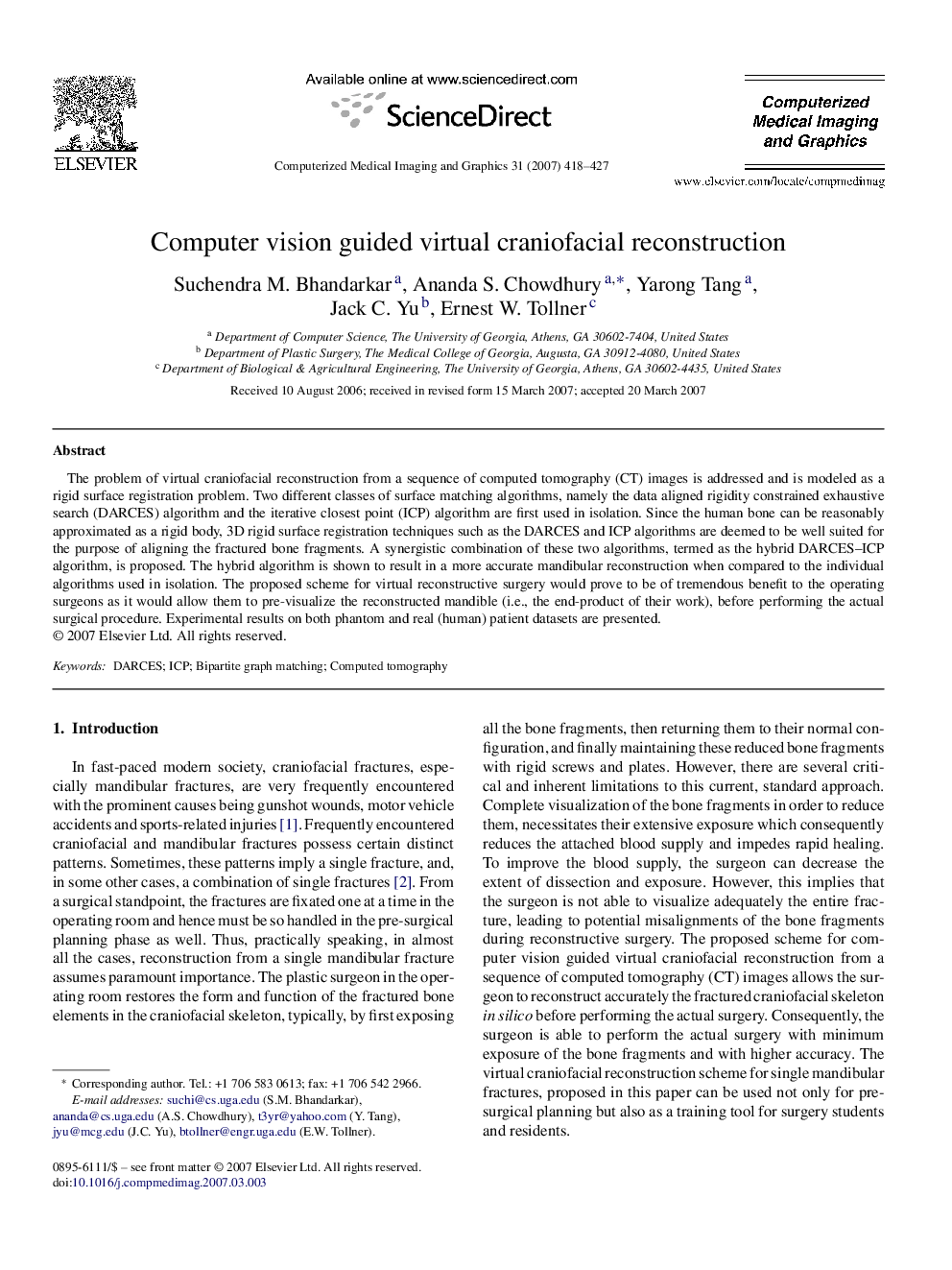| Article ID | Journal | Published Year | Pages | File Type |
|---|---|---|---|---|
| 504594 | Computerized Medical Imaging and Graphics | 2007 | 10 Pages |
The problem of virtual craniofacial reconstruction from a sequence of computed tomography (CT) images is addressed and is modeled as a rigid surface registration problem. Two different classes of surface matching algorithms, namely the data aligned rigidity constrained exhaustive search (DARCES) algorithm and the iterative closest point (ICP) algorithm are first used in isolation. Since the human bone can be reasonably approximated as a rigid body, 3D rigid surface registration techniques such as the DARCES and ICP algorithms are deemed to be well suited for the purpose of aligning the fractured bone fragments. A synergistic combination of these two algorithms, termed as the hybrid DARCES–ICP algorithm, is proposed. The hybrid algorithm is shown to result in a more accurate mandibular reconstruction when compared to the individual algorithms used in isolation. The proposed scheme for virtual reconstructive surgery would prove to be of tremendous benefit to the operating surgeons as it would allow them to pre-visualize the reconstructed mandible (i.e., the end-product of their work), before performing the actual surgical procedure. Experimental results on both phantom and real (human) patient datasets are presented.
